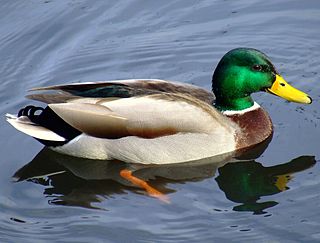 W
WThe word albatross is sometimes used metaphorically to mean a psychological burden that feels like a curse.
 W
WThe Internet Engineering Task Force (IETF) is an open standards organization, which develops and promotes voluntary Internet standards, in particular the standards that comprise the Internet protocol suite (TCP/IP). It has no formal membership roster or membership requirements. All participants and managers are volunteers, though their work is usually funded by their employers or sponsors.
 W
WThe black swan theory or theory of black swan events is a metaphor that describes an event that comes as a surprise, has a major effect, and is often inappropriately rationalised after the fact with the benefit of hindsight. The term is based on an ancient saying that presumed black swans did not exist – a saying that became reinterpreted to teach a different lesson after the first European encounter with them.
 W
WThe chicken or the egg causality dilemma is commonly stated as the question, "which came first: the chicken or the egg?" The dilemma stems from the observation that all chickens hatch from eggs and all chicken eggs are laid by chickens. "Chicken-and-egg" is a metaphoric adjective describing situations where it is not clear which of two events should be considered the cause and which should be considered the effect, to express a scenario of infinite regress, or to express the difficulty of sequencing actions where each seems to depend on others being done first. Plutarch posed the question as a philosophical matter in his essay "The Symposiacs", written in the 1st century CE.
 W
WDoves, usually white in color, are used in many settings as symbols of love, peace or as messengers. Doves appear in the symbolism of Judaism, Christianity, Islam and Paganism, and of both military and pacifist groups.
 W
WThe duck test is a form of abductive reasoning. This is its usual expression:If it looks like a duck, swims like a duck, and quacks like a duck, then it probably is a duck.
 W
WEating crow is a colloquial idiom, used in some English-speaking countries, that means humiliation by admitting having been proven wrong after taking a strong position. The crow is a carrion-eater that is presumably repulsive to eat in the same way that being proven wrong might be emotionally hard to swallow. The exact origin of the idiom is unknown, but it probably began with an American story published around 1850 about a dim-witted New York farmer. Eating crow is of a family of idioms having to do with eating and being proven incorrect, such as to "eat dirt" and to "eat your hat", all probably originating from "to eat one's words", which first appears in print in 1571 in one of John Calvin's tracts, on Psalm 62: "God eateth not his words when he hath once spoken".
 W
WThe goose step is a special marching step performed on formal military parades and other ceremonies. While marching in parade formation, troops swing their legs in unison off the ground while keeping each leg rigidly straight.
 W
WThe raven paradox, also known as Hempel's paradox, Hempel's ravens, or rarely the paradox of indoor ornithology, is a paradox arising from the question of what constitutes evidence for a statement. Observing objects that are neither black nor ravens may formally increase the likelihood that all ravens are black even though, intuitively, these observations are unrelated.